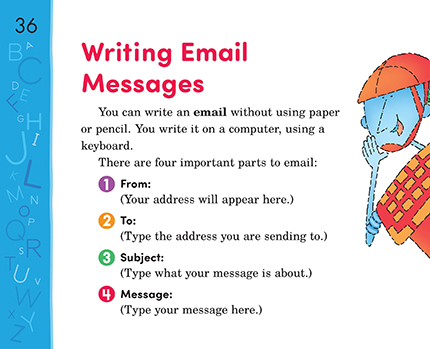Page 036 from

Start-Up Activity
Read and discuss pages 36–37 in the handbook. Ask students about their experiences with this form of communication. Then if you have a class email address, demonstrate the process of sending and receiving a message.
Enrichment Activity: If possible, set up a network of e-pals (students in your class or school, students in other schools, senior citizens, and so on) for your students. Assign a regular time and schedule for sending messages to e-pals.
Think About It
“It’s better to give than receive.”

Start-Up Activity
Read and discuss pages 36–37 in the handbook. Ask students about their experiences with this form of communication. Then if you have a class email address, demonstrate the process of sending and receiving a message.
Enrichment Activity: If possible, set up a network of e-pals (students in your class or school, students in other schools, senior citizens, and so on) for your students. Assign a regular time and schedule for sending messages to e-pals.
Think About It
“It’s better to give than receive.”